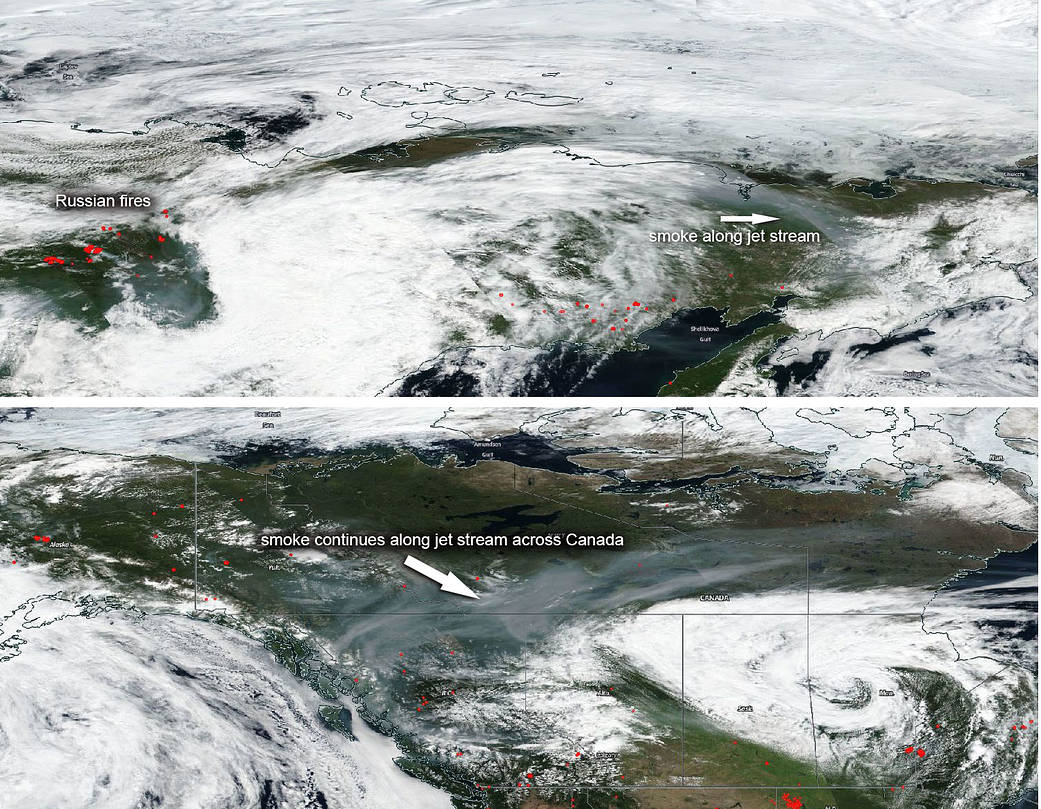The Siberian area of Russia is experiencing a huge wave of wildfires in their taiga forests. Hot, dry weather complicates the outlook for getting these fires under control. Estimates of the amount of land burning at present have been as high as ten million hectares since the beginning of 2018 which is 38,610 square miles. Fires are dangerous, of course, and do significant damage to the area where they are burning, however, smoke is dangerous as well and can spread so much more quickly than fire as evidenced by this satellite image showing the smoke from the Siberian fires reaching Canada.
The smoke released by any type of fire (forest, brush, crop, structure, tires, waste or wood burning) is a mixture of particles and chemicals produced by incomplete burning of carbon-containing materials. All smoke contains carbon monoxide, carbon dioxide and particulate matter or soot and is hazardous to breathe.
Recently though, a study was published in Journal of Geophysical Research: Atmospheres in June 2017 which discovered that particle pollution from wildfires, long known for containing soot and other fine particles known to be dangerous to human health, is much worse than previously thought. Naturally burning timber and brush from wildfires release dangerous particles into the air at a rate three times as high as levels known by the EPA, researchers found. The study also found wildfires spew methanol, benzene, ozone and other noxious chemicals. Residents that smell smoke or see haze in the air should take precautions against breathing too much of it and stay tuned to local air quality information.
NASA funded study (Journal of Geophysical Research: Atmospheres) reference: https://agupubs.onlinelibrary.wiley.com/doi/full/10.1002/2016JD026315
This satellite image was captured on July 23, 2018. Actively burning areas (hot spots) are outlined in red. Each hot spot is an area where the thermal detectors recognized temperatures higher than background. When accompanied by plumes of smoke, as in this image, such hot spots are diagnostic for fire. NASA image courtesy of the NASA/Goddard Space Flight Center Earth Science Data and Information System (ESDIS) project. Caption by Lynn Jenner with information from the NASA funded study cited above.


























